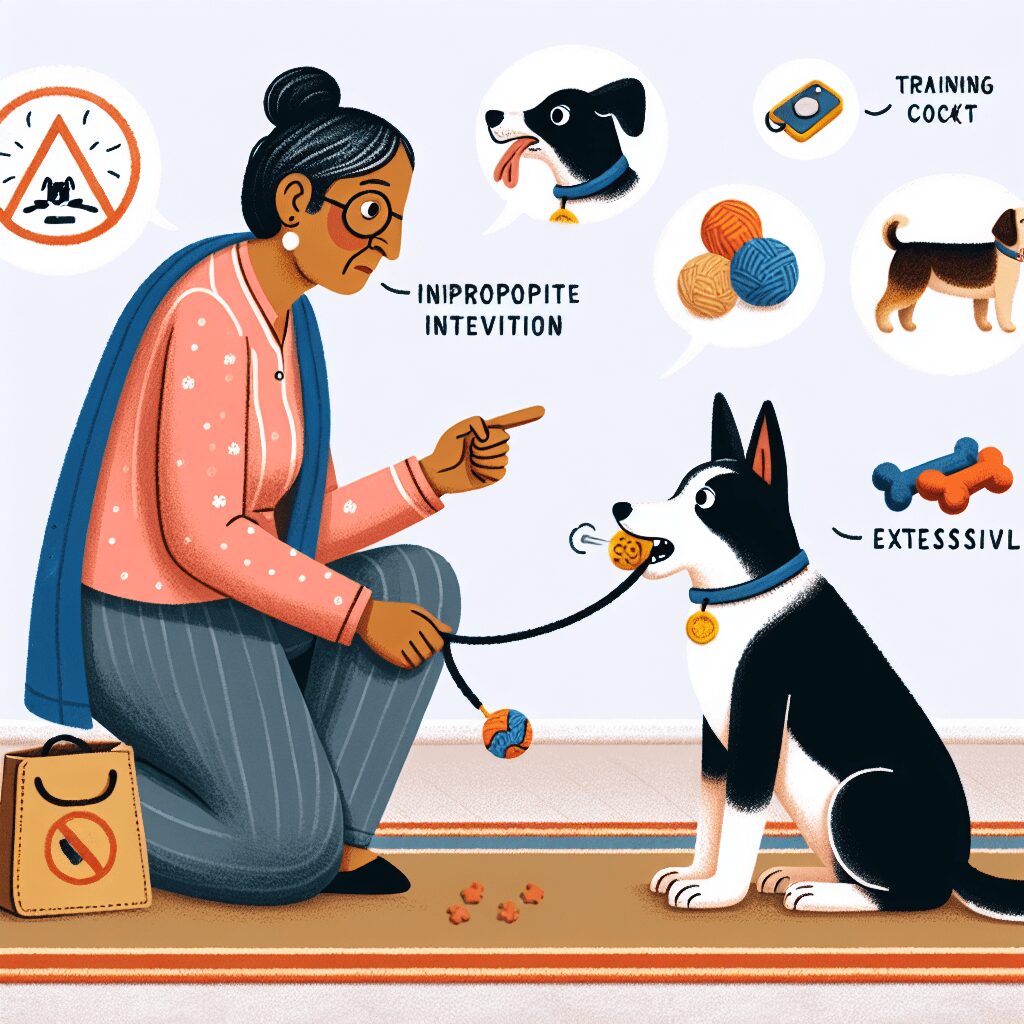Taming the Troublemaker: Essential Training Tips to Curb Your Dog’s Misbehavior
As a devoted dog lover, there’s nothing more heartwarming than watching our furry companions trot around happily, tails wagging with glee. However, every now and then, we encounter a few bumps in our puppy parenting journey. From chewing furniture to barking at the mailman, our four-legged friends sometimes showcase behaviors that leave us scratching our heads in confusion. But fear not! With patience, dedication, and a sprinkle of love, we can turn those little troublemakers into well-mannered companions. In this blog post, we’ll dive into some essential training tips that can help curtail unwanted behavior and enhance the bond you share with your lovable pooch.
1. Understanding Your Dog’s Behavior
Before we jump into training techniques, it’s crucial to understand the "why" behind your dog’s misbehavior. Dogs communicate primarily through their actions, and they may act out for various reasons. Sometimes, boredom drives them to become little whirlwinds of chaos. Other times, anxiety can trigger unwanted behaviors. For instance, if your pup is howling when left alone, they might be struggling with separation anxiety.
Recognizing the root cause is the first step. Are they energetic and need more exercise? Are they anxious about a recent change in the household? By interpreting their body language and vocalizations, you can tailor your training approach to your dog’s specific needs.
2. The Power of Positive Reinforcement
Training isn’t just about correcting unwanted behaviors; it’s also about building a trusting relationship. Positive reinforcement, or rewarding your dog for good behavior, is the most effective training method! This can be treats, praise, or playtime.
When your dog follows a command correctly or exhibits good behavior, reward them immediately. For instance, if your pup sits on command, shower them with love and a tasty treat. This not only encourages them to repeat the behavior but also strengthens your bond. Remember, training should be a fun, rewarding experience for both you and your dog!
3. Setting Clear Boundaries
Consistency is key when it comes to dog training. Setting clear, achievable boundaries helps your dog understand what is and isn’t acceptable. For example, if you don’t want your dog to jump onto the couch, ensure everyone in the household adheres to that rule. If someone allows them to do it occasionally, it sends mixed signals and can confuse your pup.
Additionally, use clear commands and ensure everyone uses the same ones. For example, choose between "sit" and "down" and stick to it. This consistency will guide your dog, making it easier for them to learn what you expect from them.
4. Channeling Their Energy
Is your dog a tornado of energy? High-energy pups often misbehave simply because they have an excess of energy! Ensuring your pup gets sufficient physical and mental stimulation can dramatically reduce unwanted behaviors.
Consider daily activities like long walks, runs, or trips to the dog park. Incorporate engaging toys or puzzle feeders to make mealtime exciting. Not only will this help tire them out, but it will also keep their minds sharp! Remember to mix things up to keep their interest; rotation of toys can be an easy way to keep them entertained.
5. Socialization is Key
A well-socialized dog is generally happier and less prone to misbehavior. Exposure to different environments, people, and other dogs teaches your pup how to behave in various situations. When dogs are not adequately socialized, they can become fearful or aggressive, leading to behavioral issues.
Start early if you have a puppy! Introduce them gradually to diverse experiences and social settings. If you have an adult dog who missed the socialization window, don’t worry! You can still teach them the ropes. Consider enrolling in obedience classes or taking them to local pet-friendly events.
6. Addressing Problematic Behaviors
Sometimes, addressing specific behaviors directly is necessary. For instance, if your dog is overly aggressive with their toys and snaps at you when you try to take them away, you can implement training methods to manage this.
Use significant distractions during playtime to teach your dog to feel comfortable sharing. Take a moment to switch the toy for a treat when they’re focused on playing. Gradually increase the amount of time they spend without trying to grab the toy back while you reward them for remaining calm. Positive reinforcement coupled with redirecting their focus can help minimize jealousy or aggression related to toys.
7. The Importance of Routine
Just like humans thrive with structure, dogs flourish when they have a consistent routine. Establishing a schedule for feeding, walks, playtime, and bathroom breaks gives your dog a sense of security. When they know what to expect, they’re less likely to act out with confusion or anxiety.
Over time, they will learn to anticipate activities, which can improve their behavior as they understand when it’s time to play and when it’s time to settle down. Create a timetable that suits your lifestyle, and stick to it as closely as possible!
8. Seeking Professional Help
If you find that your dog’s misbehavior persists despite your best efforts, seeking the help of a professional dog trainer or behaviorist can be beneficial. They can provide personalized guidance tailored to your dog’s specific challenges. Sometimes, just having an expert’s perspective can uncover underlying issues or provide new strategies to tackle ongoing problems.
Remember, it’s never a sign of failure to ask for help. As devoted dog parents, we all want what’s best for our pups, and sometimes expert guidance is the key to achieving that goal!
Conclusion
Training your dog can feel like a daunting task at times, especially when faced with misbehavior. However, through understanding, positive reinforcement, and a commitment to consistency, each of us can foster a deeper bond with our furry friends. Every dog is different, so take the journey at your own pace, and always remain patient and loving.
Remember, with dedication and love, you can tame the little troublemakers and transform them into the perfect companions. Now, gear up to embrace the beautiful chaos that is dog parenting, knowing that a well-behaved dog is just a training session or two away!
FAQ
Q1: How long does it take to train a dog?
A: The training duration can vary significantly depending on the dog’s age, breed, and previous experiences. Some basic commands can be taught within a few sessions, while more complex behaviors may take weeks or months.
Q2: Is it too late to train my adult dog?
A: It’s never too late to train a dog! Adult dogs can learn new behaviors and commands just like puppies. Just be patient and consistent.
Q3: What to do if my dog continues to misbehave?
A: If your dog continues to misbehave despite your efforts, consider seeking help from a professional trainer who can provide personalized guidance.
Q4: How often should I train my dog?
A: Short, frequent training sessions (about 5-10 minutes a few times a day) tend to be more effective than long weekly sessions.
Q5: Can I train my dog without treats?
A: Yes! While treats are effective motivators, you can also use praise, petting, or play as rewards. Find what motivates your dog the most!
Unlock the Secrets to a Well-Behaved Dog! 🐾 Tired of your pup’s bad habits? Discover how to transform your unruly dog into a loving companion with our FREE Dog Training Mini Course! Learn essential commands, potty training tips, and effective techniques to eliminate unwanted behaviors in just days. Don’t miss out—sign up now and start your journey to a happier, obedient dog! Join Here! (https://bit.ly/3RJak0a)
Instantly Access Your Free Children’s Books Here! (https://payhip.com/BlueCherryStore) –
Disclaimer: I may earn a commission from qualifying purchases as an affiliate. Please note that I only recommend products I believe will provide value to my readers.(M)









